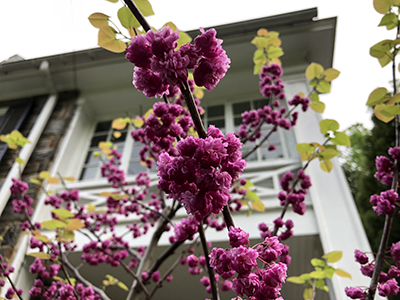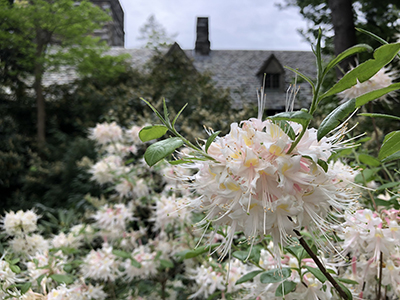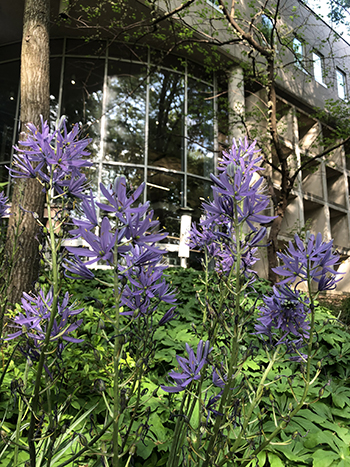
Cercis canadensis ‘Pink Pom Poms’ is a fun, new variety of redbud originating from North Carolina State University. The breeding program’s main objective was to develop a double flowered form that resembles the foliage characteristics (small, glossy leaves) and semi-upright growth habit of Cercis canadensis var. texensis (Texas redbud). A 2014 plant patent summarizes the introduction as follows: “ ‘Pink Pom Poms’ is distinguished from other related known cultivars based on the unique combination of traits including high vigor, semi-upright growth habit, glossy leaf character, abundant production of double flowers having a bright purple-violet color, and female structures that are essentially sterile.” A specimen was planted in 2020 at the Dan West Garden near Whittier Hall. Photo credit: J. Coceano

Rhododendron alabamense (Alabama azalea) is in full bloom along Chester Road in the Camellia Collection. Spreading by underground runners, the Alabama and Georgia native exhibits greater drought tolerance than other species. White flowers with a prominent lemon-yellow blotch on the upper petal bear a distinct lemon fragrance. Now if only our native azaleas would develop a taste deer didn’t find so tempting. Photo credit: J. Coceano

Along with alliums, Camassia is a great choice to extend your spring bulb display. Coming into bloom as tulips finish, Camassia leitchtlinii, (Leichtlin’s camas) produce upright terminal racemes with 20-80 flowers per flower spike. Blooms open from bottom to top and may be white, cream, blue or purple, all with attractive yellow anthers. The sleek flowers seem equally at home in modern, naturalistic, and cottage garden designs. Plant mid-border to mask the yellowing foliage as plants go dormant in the summer. This Western North American native is black walnut tolerant and makes for a great cut flower. Camassia leitchtlinii is planted behind the Science Center library. Photo credit: J. Coceano
